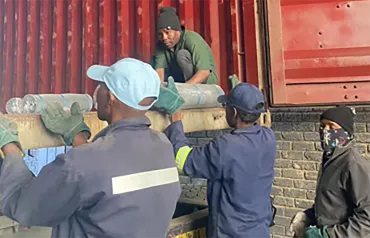Οκτ . 16, 2024 14:40 Back to list
Optimizing Hose Crimping Techniques for Enhanced Performance and Durability
Understanding Hose Crimping A Key Process in Fluid Transfer Systems
Hose crimping is a critical process often overlooked in the maintenance and manufacturing of fluid transfer systems. Whether in industrial machinery, automotive applications, or hydraulic systems, the integrity of hoses plays a vital role in ensuring efficient performance and safety. This article will delve into the significance of hose crimping, the crimping process, tools and equipment used, and its various applications across different industries.
What is Hose Crimping?
Hose crimping refers to the mechanical procedure of compressing a metal fitting onto the end of a hose, creating a secure and leak-proof connection. This process is crucial for hoses that transport liquids, gases, or materials under pressure. The crimping creates a tight bond between the metal fitting and the hose, allowing for safe and efficient fluid transfer.
The Crimping Process
The crimping process involves several steps, each contributing to the overall quality and durability of the connection
1. Preparation The first step is to ensure that the hose and fitting are compatible. Different hoses are designed for specific applications, and selecting the right combination is essential for a secure connection. Additionally, the hose must be cut to the correct length, ensuring that no fraying or damage occurs at the cut end.
2. Insertion of Fitting After the hose is cut, the metal fitting is inserted into the hose. This fitting typically comprises a ferrule, which is a sleeve that will later be crimped, and a nipple, which helps secure the connection.
3. Crimping The crimping itself is performed using a crimping tool or machine. The crimping tool applies pressure to the ferrule, compressing it securely against the hose. Different tools may be used depending on the size and material of the hose, and the crimping technique must ensure an even distribution of pressure to prevent weaknesses.
4. Quality Control After crimping, it’s essential to inspect the connection for any defects. This may include checks for alignment, leaks, and the integrity of the crimp. Some manufacturers may perform hydrostatic tests or ultrasonics to verify the strength of the connection.
Tools and Equipment Used in Hose Crimping
Several tools are available for hose crimping, ranging from manual hand tools to automated hydraulic machines. The type of tool chosen often depends on the scale of the operation and the specific requirements of the hoses being dealt with
hose crimp

- Manual Crimping Tools These are often used for smaller projects where only a few hoses need crimping. They provide precision and are suitable for lower-pressure applications.
- Hydraulic Crimping Machines For larger applications, hydraulic machines are employed, providing the necessary force to crimp larger hoses consistently. These machines facilitate a higher volume of production with uniform results.
- Die Sets Different die sets are used in crimping machines to achieve various fitting sizes and shapes. Ensuring the correct die is used is critical for achieving a proper crimp.
Applications of Hose Crimping
Hose crimping finds applications in numerous industries, including
- Automotive Crimped hoses are used in fuel and hydraulic systems, ensuring that the transfer of fluids occurs without leaks.
- Construction Heavy machinery relies on crimped hoses to maintain hydraulic systems, allowing for smooth operation and movement.
- Manufacturing Fluid transfer systems in manufacturing processes often use crimped hoses for automation and material handling systems.
- Agriculture Crimped hoses are essential for irrigation and other fluid transfer systems in farming, allowing for efficient water and chemical distribution.
Conclusion
Hose crimping is a vital process that ensures the reliability and safety of fluid transfer systems. Understanding the intricacies of the crimping process, the tools required, and the applications across various industries highlights the importance of this seemingly simple operation. Properly crimped hoses contribute significantly to overall system performance, making them indispensable in modern engineering and industrial applications. Regular training and adherence to quality control standards can further enhance the effectiveness of hose crimping, ensuring that these vital connections remain strong and efficient for years to come.
-
Weather Resistance Properties of Quality Roofing Nails
NewsAug.01,2025
-
How Galvanised Iron Mesh Resists Corrosion in Harsh Environments
NewsAug.01,2025
-
Creative Landscaping Uses for PVC Coated Wire Mesh Panels
NewsAug.01,2025
-
Common Wire Nail Dimensions and Their Specific Applications
NewsAug.01,2025
-
Choosing the Right Welded Wire Sheets for Agricultural Fencing
NewsAug.01,2025
-
Anti - Climbing Features of Razor Wire Barriers
NewsAug.01,2025









